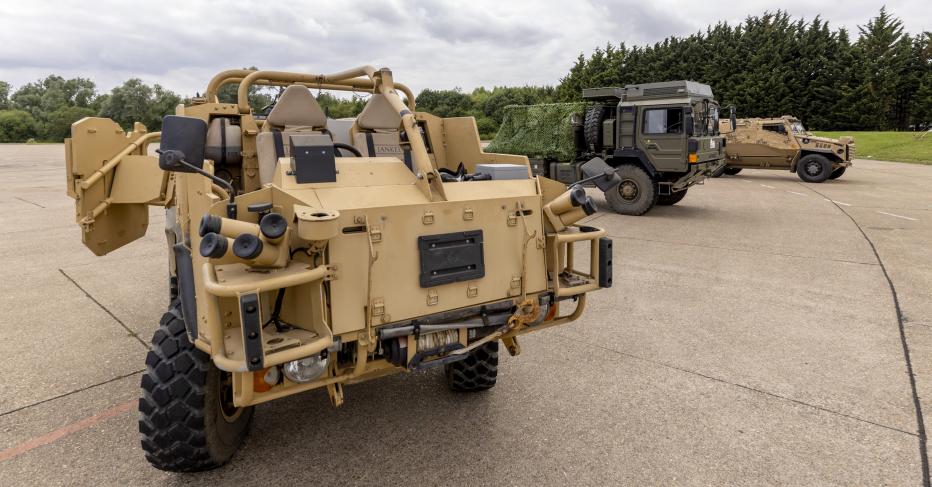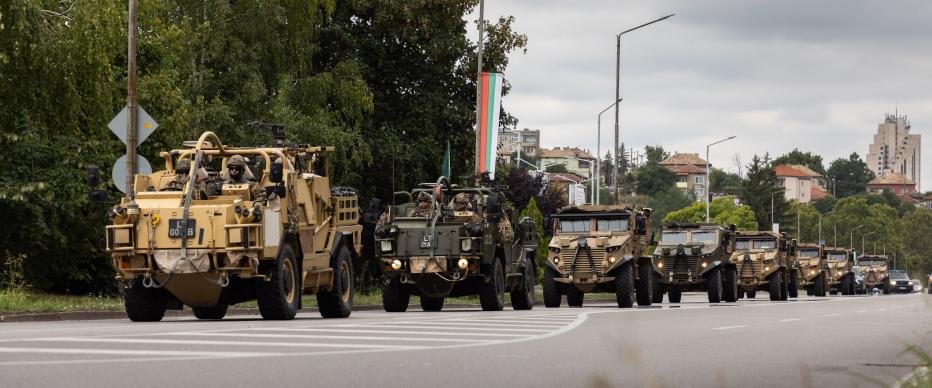
UK MOD © Crown copyright 2021 Sergeant Ben Beale, RLC British Army
Our Testing Advice Trialing Arrangement (TATA) Systems Engineering team is helping to convert some of the Army’s vehicles to hybrid electric drive. Not only will this reduce the vehicles’ carbon footprint but it could also provide additional power sources on the frontline and/or when facing peacekeeping challenges.
Tim McCarthy, a Senior Systems Engineering Consultant at Jacobs, said: “Unlike existing models powered solely by diesel engines, hybrid vehicles can also be used on or close to the frontline as power sources for forward operating bases, air defense radar, field hospitals and other intelligence and electronic applications.
“Hybrid vehicles are quieter and so more stealthy for special operations, have faster acceleration, better fuel economy and increased range. As well as improved off-road performance, they’re more reliable and less likely to break down.”
In addition to military operations and/or peacekeeping applications, the adaptations will increase the Army’s capability to support civilian infrastructure, such as providing emergency back-up power to non-governmental organizations in areas which have lost connection to the grid because of extreme weather or natural disasters.
-
3072
Metric tons of steel and aluminum removed from the British Army’s vehicle fleet by disposing of the gearbox and telematics box
-
95.89
Metric tons of lubricating engine oil no longer required
The Technology Demonstrator 6 (TD6) Hybrid Electric Drive project, led by Defence Equipment & Support at the U.K. Ministry of Defence, is tasked with delivering three experimental platforms for trials and testing in order to prove the concept.
Tests are being carried out to see whether hybrid versions of the MAN Support Vehicle, Jackal 2 and Foxhound can really make the Army’s vehicle fleet more capable with a lower operating carbon footprint.
The vehicles have kept their diesel engines and there’s no change to the suspension, armor, controls, payload volume, or the engine and fueling. The big difference, however, is that the gearbox and drivetrain are replaced with a generator, batteries, battery management system, power electronics and electric motors.
Jacobs worked with vehicle manufacturers Rheinmetall BAE Systems Land (MAN SV), Supacat (Jackal) and General Dynamics (Foxhound) and with the UTAC Millbrook proving ground facility near Milton Keynes where the British Army tests its vehicles. Our team also introduced Rotherham-based electric drive system designer and manufacturer Magtec as a key supplier to the project.

UK MOD © Crown copyright 2022 Army Photographer: SSgt Dek Traylor
Our TATA team is responsible for all systems engineering work packages, ensuring that the program is documented and produced to the highest standard. The main deliverables on top of ongoing engineering support are:
- Analyzing benefits based on the outcome of the experimental trials and tests;
- Technology management;
- Sustainability analysis;
- Configuration management; and
- Stakeholder engagement.
Colonel Simon Ridgway, from British Army HQ, said: “TD6 is a key part of the Army’s plan for electrification of the battlefield, which seeks to gain operational advantage through using novel solutions for power, performance and support while also reducing carbon emissions.
The program will provide evidence to support the benefits, both direct and indirect, that hybridization of some or all of our vehicle fleet may bring to inform our roadmap towards a more capable and sustainable future.”

“Unlike existing models powered solely by diesel engines, hybrid vehicles can also be used on or close to the frontline as power sources for forward operating bases, air defense radar, field hospitals and other intelligence and electronic applications.
“Hybrid vehicles are quieter and so more stealthy for special operations, have faster acceleration, better fuel economy and increased range. As well as improved off-road performance, they’re more reliable and less likely to break down.”
Tim McCarthy, Jacobs Senior Systems Engineering Consultant
























































